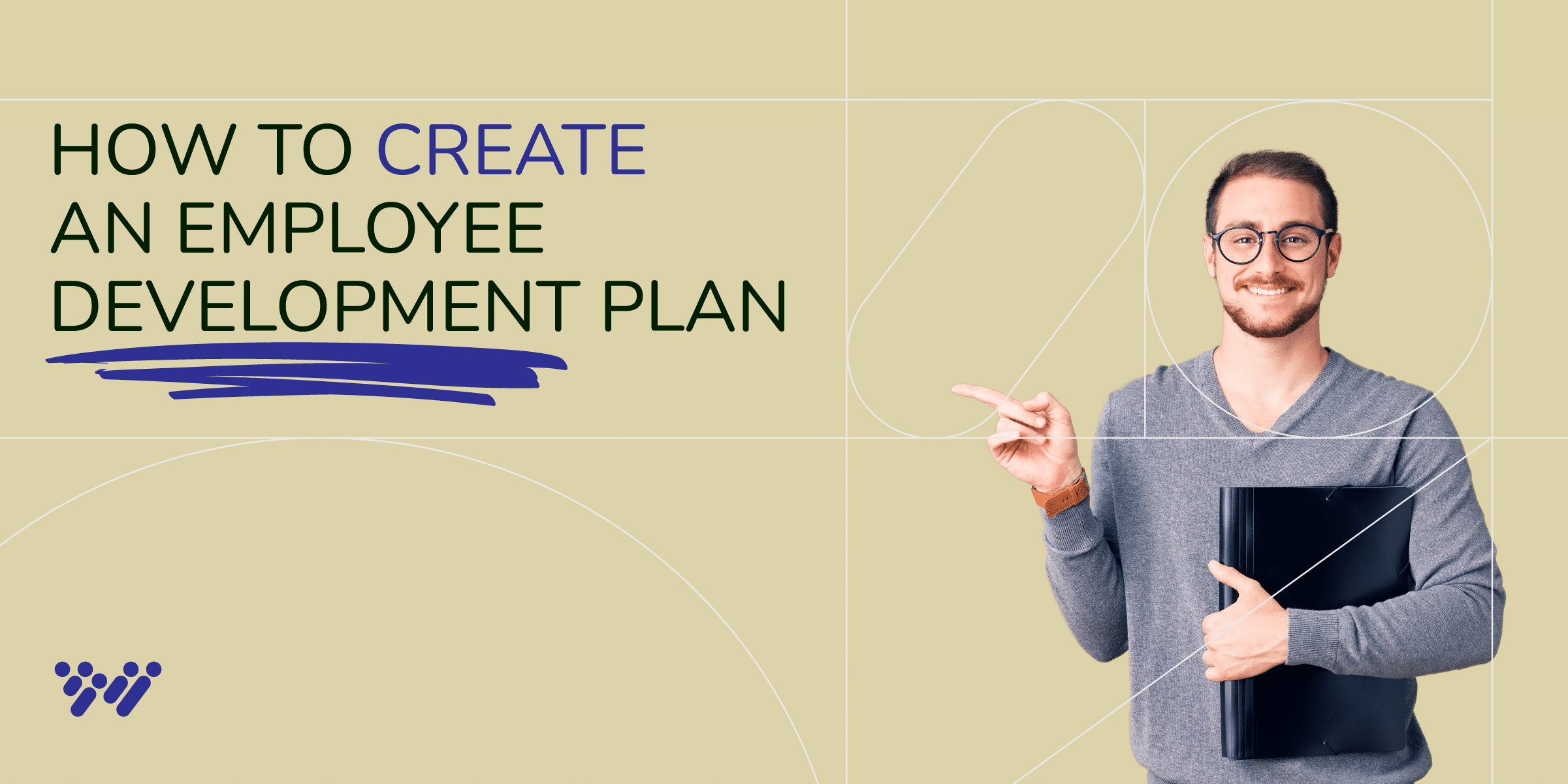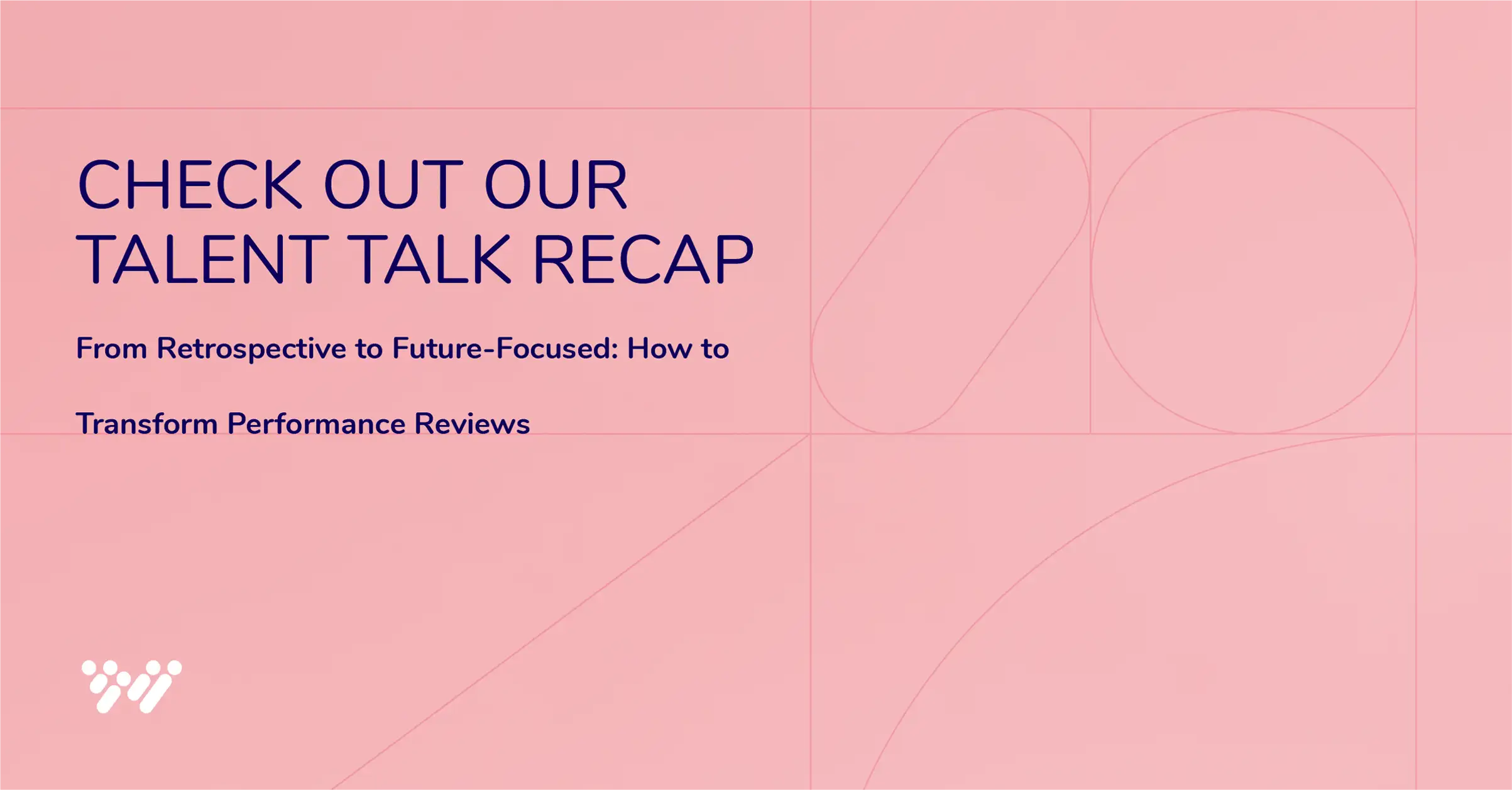Today’s pace of change is unprecedented. Entire industries can shift overnight — as seen by the pandemic’s acceleration of digital transformation. PwC’s 2023 Global CEO Survey found that an astonishing 40% of CEOs are concerned with the short- and long-term viability of their organizations given future disruptions and current challenges. The majority of CEOs also expect labor and skills to significantly impact profitability in over the next 10 years.
Economic uncertainty, layoffs, and evolving digital skills further compound the challenges facing companies, particularly in the tech sector. Today, organizations must achieve more with fewer resources. This urgency demands an “all hands on deck” approach, requiring meaningful and ongoing investments in the workforce.
Hiring alone can’t solve the challenges modern businesses face. Organizations must invest in finding the right talent and developing them. When equipped with the right tools and skills, employees can be the driving force behind groundbreaking ideas and innovative solutions. In this article, we take a closer look at the benefits of employee development and steer you toward effective methods to promote impactful employee growth.
“94% of employees said they’d stay at a company longer if it invested in helping them learn.” — LinkedIn Workforce Learning Report
- What is Employee Development?
- Why Is Employee Development Important?
- Effective Employee Development Methods
- Strengthen Your Team With Wonderlic Develop
What Is Employee Development?
Bringing great talent on board is only the first step in shoring a growing labor shortage. The real challenge lies in keeping and growing that talent.
That’s where employee development comes in.
So, what is employee development? Often, people think training, but employee development is much more than that. The difference between training and development is all about nurturing overall employee growth, not just specific skills. It’s about boosting knowledge, skills, and abilities within the organization. Employee development starts with an understanding of your workforce and them understanding themselves.
It’s a crucial part of the bigger talent strategy picture, championed by HR leaders who ensure employees have what they need to thrive. But it’s a lot for one team to manage. Modern HR leaders are responsible for creating comprehensive employee development programs for different functional teams that mix workshops, mentoring, AI tools, assessments, and other methods. Phew.
Why It Matters
Investing in staff development is a strategic move that promotes adaptability to change — and enriches the lives and careers of its workforce. Well-designed employee development programs enhance organizational performance, productivity, and capacity to effectively navigate disruption. At the same time, they provide employees with valuable growth opportunities, aligning their aspirations with organizational objectives and fostering a sense of purpose in their roles. When executed effectively, they build a mutually beneficial relationship between organizational success and individual growth.
But HR leaders don’t have to do it all alone. Modern employee development programs and solutions should empower employees to take charge of their growth so that it becomes a shared responsibility. Ideally, their managers cheer them on as they grow. This teamwork makes learning and career advancement exciting, personal, and aligned to both individual goals and the company’s short- and long-term needs.
Employee development is more than honing skills to tackle today’s greatest challenges. It’s about building an adaptable workforce. Organizations can tap into their team’s full potential through learning, foresight, and a united purpose, setting the stage for lasting success.
What Are Skills?
Skills are no longer just keywords on resumes, but rather vital tools for driving business growth. They are now the modern currency of the workforce, used to assess suitability for jobs and the ability to adapt to evolving external demands.
Skills are typically categorized as hard or soft, with soft skills — or power skills — taking center stage. Power skills encompass interpersonal abilities that individuals use to communicate, collaborate, and work efficiently with others. As hard skills like coding or accounting become increasingly automated, the importance of power skills grows, providing a stable foundation for interpersonal relationships and dynamic problem-solving. Power skills, including teamwork, leadership, emotional intelligence, and time management, are universally valuable across roles and industries, making the enhancement of power skills and competencies a worthwhile investment for every individual within an organization.
Why Is Employee Development Important?
Improve productivity, retain top talent, and save money
Traditional performance management often focuses too much — or entirely — on past achievements, looking backward to evaluate an employee’s recent contributions. Without that forward-looking perspective, performance management falls short in paving the way for future growth and adaptability. Instead, total employee development must be deeply intertwined with performance goals.
That’s because high performers aren’t just a bit more productive — they’re a whopping 400% more effective than their counterparts. As job complexity escalates, this productivity gap widens further. In management and software development roles, high performers showcase an astonishing 800% surge in productivity.
HR leaders have to lay the groundwork for effective talent alignment. They can use employee development tools to align current and future skills, knowledge, and attributes with top-notch performance. In the current economic climate, characterized by maintaining productivity with fewer resources, the focus shifts toward matching exceptional talent with the highest-value roles. McKinsey’s research highlights that a significant 20 to 30 percent of critical positions remain occupied by individuals who may not be the best fit.
Targeted employee development programs can align with the organization’s strategic objectives. When employees participate in development opportunities that directly support the company’s goals, their improved performance directly impacts the organization’s success.
Attract Top Talent
In a tight labor market, employer brand is everything. Skills training ranks among the top preferences for younger job seekers. (It’s worth noting that Gen Z is projected to make up about 30% of the workforce, so appealing to younger employees is more essential than ever.) The majority of workers (77%) are eager to learn new skills — or completely retrain — and they aren’t afraid to jump ship or choose an employer that prioritizes employee development.
Employee development plays a significant role in those beginning stages of the employee lifecycle. Many forward-thinking organizations have embraced modern tools like psychometrics and skills assessments to evaluate candidate compatibility. While selection tools are instrumental in ensuring the right fit, employee development programs take things a step further and maximize the potential of individuals after they’re hired. The integration of assessment into the hiring process serves as a blueprint for ongoing development.
By nurturing a culture of continuous learning, organizations can better attract high-performing talent — and lay a foundation for their future success. This strategic investment aligns companies with the aspirations of incoming talent and underscores a commitment to their professional journey.
Retain Talent and Save Money
Organizations that fail to offer career development and upskilling avenues could be in for a rough ride. When people exit, the consequences rattle the company’s bottom line. The price of replacing a single employee can range from half to twice their annual salary — and that’s a conservative estimate. According to SHRM, the departure of each team member could cost the company between 50 to 250% of their annual salary, depending on their seniority.
When it comes to maintaining a dream team, professional development plays a pivotal role. 61% of employees percent see learning new skills as a major reason to stick with their job. With 26% of workers indicating they plan to leave their job in the next year, this statistic underlines the profound importance of employee development — and providing future opportunities within the organization.
It’s also not just about retaining talent. It’s also about building invaluable skills. A soft skills development study from MIT Sloan showcased a 250% return on investment within a year, with a surge in worker productivity being the cornerstone of this gain. Other factors also come into play, including the ability to tackle intricate tasks with newfound speed, immediate enhancements in attendance, and a surge in training-driven retention.
The bottom line: Employee development plays a role in preventing talent drain and building skills that propel the business forward.
Foster Company Culture
Fostering company culture is essential for encouraging employees to make behavioral changes and positively attach themselves to the organization. But company cultures aren’t born out of thin air. They’re a purposeful creation, forming a bridge between people, their values, and the organization’s mission. It sets the tone for collaborative dynamics and respectful interactions, nurturing a shared sense of belonging and language for development in the workplace.
Organizations are responsible for crafting a culture of engagement deeply intertwined with ongoing employee growth, skill building, and continuous learning. Empowered by employee development programs that align with their core values, every member of the organization becomes a stakeholder in fostering a sense of allegiance and affinity with the company.
These cultures aren’t just nice to have. They’re a shared vision — a rallying cry — that gives employees a purpose and place of belonging. A strong company culture can minimize the costs of turnover while encouraging employees to continually evolve and adapt.
Effective Employee Development Methods
With a booming $380 billion industry dedicated to employee growth, there are many avenues to take. Let’s shift our focus from “What is employee development?” to “What sets effective employee development methods apart?” It’s all about connecting the dots between learning and practical job applications.
Effective employee development occurs through three main channels: 70% from job-related experiences, 20% from interpersonal interactions, and 10% from formal educational methods. This approach, widely recognized as the 70-20-10 model for learning and development, acknowledges that people have diverse learning styles and emphasizes the crucial connection to an individual’s job or project for optimal effectiveness. It represents a fusion of methods with a hands-on, learn-by-doing emphasis that enhances the retention of knowledge and its practical application to an organization’s goals. ..
Below, we’ll explore the tried-and-true methods of employee development. From leadership development and dynamic coaching to intensive training and industry events, each approach plays an essential role in empowering employees to adapt their skill sets to the ever-evolving needs of the business.
Leadership Development Programs
Managers play a pivotal role in team success. A Gallup survey reveals that 70% of team engagement hinges on managerial leadership. Yet, many managers lack the training to transition from individual contributors to effective people leaders.
The leap from individual contributor to manager requires a shift in behaviors and skills. Unfortunately, new leaders often receive minimal guidance. This leads to challenges for both managers navigating new roles and their direct reports who crave meaningful support.
Through leadership development programs, leaders can master team operations, goal setting, and motivation. HR is responsible for equipping employees with vital power skills, blending training, workshops, mentoring, and assessments to shape well-rounded leaders.
Example: A new engineering manager who was promoted based on his individual contributions recognizes a gap in his leadership skills. This includes skills related to his ability to motivate a team, assign projects, and resolve conflict. He takes an employee development assessment and is given resources to improve his ability to lead and motivate his team.
Employee Development Assessments
Today’s talent leaders face unprecedented challenges, including the need to retain top performers and do more with fewer resources. Employee development assessments excel at identifying strengths, revealing growth areas, and curating custom development roadmaps and learning content that align with organizational goals. In contrast to leadership development programs, employee development assessments are a solution for all levels of the organization.
Effective assessment techniques integrate feedback collection and psychometric tests. With clear targets, personalization, and actionable insights as compass points, employees and their managers can implement a plan to build competencies, propel career advancement, and contribute to the organization’s success. Leading the way in employee development solutions is Wonderlic Develop, a science-based assessment that measures cognitive abilities, personality, and motivation to help employees master their job-specific competencies.
Example: A project manager is struggling to effectively lead projects and collaborate with stakeholders. Using a psychometric assessment, they gain insights into their communication style and high-effort / low-effort power skills. They review their results and receive a customized development plan.
Courses, Workshops, and Seminars
Organized events, seminars, workshops, and trade shows allow employees to learn, network, and gain insights from experts in their field. While they can be costly and require employees to take time off work, investing in them can be worth every penny. Think of conferences as the direct line to industry trends and hands-on learning. The immersive experience can also be incredibly motivational and engaging.
Attending these events exposes employees to the latest industry trends, innovations, and best practices, allowing them to bring this knowledge back to their roles, making conferences a valuable part of the experiential learning aspect of the 70-20-10 rule. Making the most of these opportunities means weaving in post-conference insights into daily roles and projects. That’s how talent leaders and managers can ensure time and resources are put to the best use — and encourage employees to find real-world applications.
Example: A marketing team aims to steer toward more data-driven decisions. In this scenario, an employee proactively engages in their professional development by enrolling in a self-paced online course to help them use tools and measurements across content, social media, and data analytics.
Mentoring and Coaching
When rising talent is paired with skilled coaches and mentors, magic happens. These relationships offer custom guidance, ongoing support, and invaluable insights to boost performance. The difference between mentors and coaches is nuanced. Mentors, typically experienced leaders within a company, share practical wisdom, domain expertise, and network connections. In contrast, coaches provide structured, results-driven support to enhance performance and cultivate skills.
How can HR design impactful employee development programs? They can orchestrate the pairing of employees with relevant mentors and coaches and prepare managers to embrace a coaching mindset — a trend Harvard Business Review recognizes as transformative. Effective mentoring and coaching programs also require in-depth understanding of an employee’s capabilities, behaviors, and interests so they can set focused goals and gather effective feedback. Wonderlic Develop can streamline this process, providing actionable guidance for mentors, coaches, and employees so they can build more meaningful connections between coaching goals and on-the-job performance. This reduces the administrative load on HR and managers, resulting in a smoother and more efficient mentoring process.
Example: A software engineer aspires to transition into a team lead role. She partners with a senior manager of software engineering to create a development plan outlining the skills she needs to develop, potential learning opportunities, and a timeline for achieving her goal. Through this experience, she gains valuable guidance, practical knowledge, and the confidence to apply for the management position.
Peer Learning Groups
Learning through peers or business partners creates a unique opportunity for employees to exchange knowledge and build connections. These trusted partners provide a symbiotic relationship where employees depend on each other for learning opportunities and access to other parts of the business. They can also take the form of peer learning groups, where employees gather not just to learn but also to inspire each other through teamwork, creative problem-solving, and knowledge sharing. Simply put, collaboration sparks innovation and growth.
How can HR guide the journey? They can develop well-structured frameworks that define clear objectives and immediate applications to individuals’ roles or projects. They should also encourage employees to schedule regular meetings, set goals, and report their outcomes.
Example: An ambitious sales manager leverages employee development resources to create a peer learning group focused on negotiation tactics. Using the frameworks provided by HR, the group identifies their objectives, including improving negotiation strategies and learning from each other’s experiences. They also bring in sales leaders from the organization to share techniques for effective negotiation. Through collaborative problem-solving sessions, the group actively works through sales challenges together — and then reports their findings and best practices to the wider team.
Conferences and Industry Events
Organized events, seminars, workshops, and trade shows allow employees to learn, network, and gain insights from experts in their field. While they can be costly and require employees to take time off work, investing in them can be worth every penny. Think of conferences as the direct line to industry trends and hands-on learning. The immersive experience can also be incredibly motivational and engaging.
Attending these events exposes employees to the latest industry trends, innovations, and best practices, allowing them to bring this knowledge back to their roles, making conferences a valuable part of the experiential learning aspect of the 70-20-10 rule. Making the most of these opportunities means weaving in post-conference insights into daily roles and projects. That’s how talent leaders and managers can ensure time and resources are put to the best use — and encourage employees to find real-world applications.
Example: The leaders of a company concerned with streamlining their supply chain processes are eager to learn about up-and-coming technologies. They send their operations team to a conference hosted by Gartner, a reputable source, to learn from and connect with leaders in the space. They return with fresh insights into supply chain digitization, innovative strategies, and best practices for implementing digital optimization solutions, plus new connections that could lead to future hires or vendor partnerships.
External Certifications and Qualifications
External certifications and qualifications involve obtaining a reputable third-party credential outside of the workplace. They speak volumes about employees’ skills and subject mastery.
Certifications are also badges of trust and authority, validating both employee expertise and the company’s commitment to developing skilled professionals. The result is an elevated reputation among employees, customers, and candidates.
Example: An HR generalist seeks to deepen her knowledge of compensation structures and systems with the hopes of specializing her skills. She enrolls in a certification program hosted by SHRM, which includes comprehensive coursework, case studies, and practical assignments related to compensation and total rewards. With her earned certification, she begins supporting compensation projects and ultimately transitions into a more specialized role.
Strengthen Your Team With Wonderlic Develop
The pace of change in our world has exploded over the past few years, and it shows no signs of letting up. This underscores the urgency for increased innovation and adaptability — and the importance of employee development. There’s no shortage of employee development methods available today. However, it’s crucial to ensure that these programs are not only easy to implement but also help employees take control of their careers.
When programs are engaging and help employees take targeted action to their job roles, these programs can help organizations improve productivity, advance critical initiatives, build engaging cultures, and retain top performers. Most importantly, organizations need to be able to measure the effectiveness of development programs and ensure they’re moving the needle.
The future of employee development is in your hands. Ready to take the next step? Discover the power of science-based talent assessments and development: Sign up for a free demo of Wonderlic Develop.






